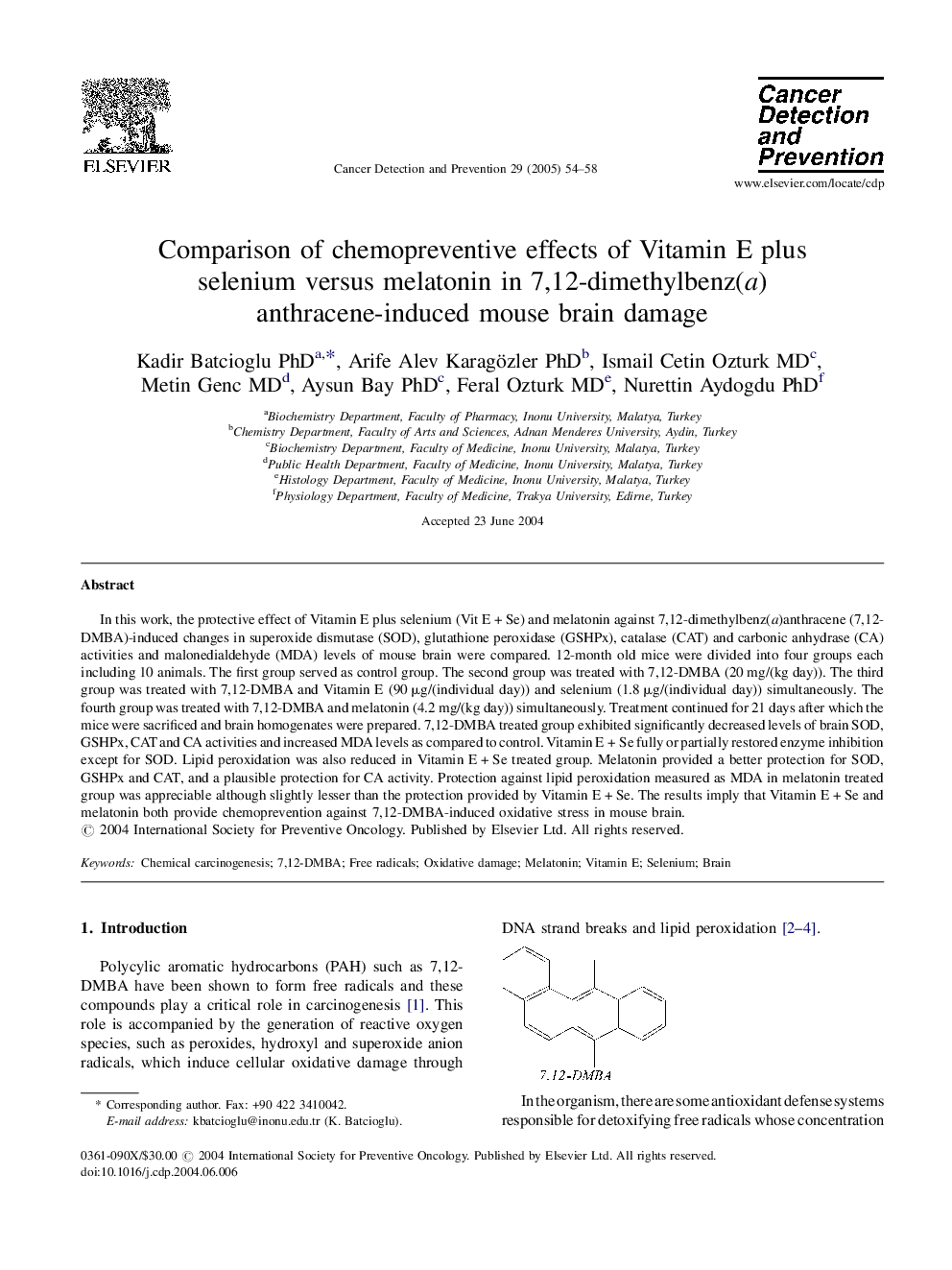| Article ID | Journal | Published Year | Pages | File Type |
|---|---|---|---|---|
| 10896960 | Cancer Detection and Prevention | 2005 | 5 Pages |
Abstract
In this work, the protective effect of Vitamin E plus selenium (Vit E + Se) and melatonin against 7,12-dimethylbenz(a)anthracene (7,12-DMBA)-induced changes in superoxide dismutase (SOD), glutathione peroxidase (GSHPx), catalase (CAT) and carbonic anhydrase (CA) activities and malonedialdehyde (MDA) levels of mouse brain were compared. 12-month old mice were divided into four groups each including 10 animals. The first group served as control group. The second group was treated with 7,12-DMBA (20 mg/(kg day)). The third group was treated with 7,12-DMBA and Vitamin E (90 μg/(individual day)) and selenium (1.8 μg/(individual day)) simultaneously. The fourth group was treated with 7,12-DMBA and melatonin (4.2 mg/(kg day)) simultaneously. Treatment continued for 21 days after which the mice were sacrificed and brain homogenates were prepared. 7,12-DMBA treated group exhibited significantly decreased levels of brain SOD, GSHPx, CAT and CA activities and increased MDA levels as compared to control. Vitamin E + Se fully or partially restored enzyme inhibition except for SOD. Lipid peroxidation was also reduced in Vitamin E + Se treated group. Melatonin provided a better protection for SOD, GSHPx and CAT, and a plausible protection for CA activity. Protection against lipid peroxidation measured as MDA in melatonin treated group was appreciable although slightly lesser than the protection provided by Vitamin E + Se. The results imply that Vitamin E + Se and melatonin both provide chemoprevention against 7,12-DMBA-induced oxidative stress in mouse brain.
Keywords
Related Topics
Life Sciences
Biochemistry, Genetics and Molecular Biology
Cancer Research
Authors
Kadir PhD, Arife Alev PhD, Ismail Cetin MD, Metin MD, Aysun PhD, Feral MD, Nurettin PhD,
